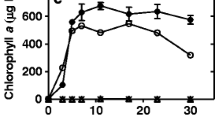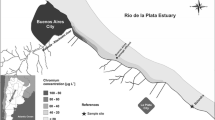Abstract
A study to determine the effects of various concentrations of chlorine on the productivity of entrained marine phytoplankton was carried out at a nuclear power station on northeastern Long Island Sound, USA. Chlorine is a biocide used to control the growth of marine fouling organisms on the walls of many power station cooling systems. Chlorine concentrations considerably below those required to eliminate fouling organisms produced large decreases in the productivity of entrained phytoplankton. Generally, between 0.25 and 0.75 ppm residual chlorine at the cooling water discharge, continuously applied, is required to eliminate fouling organisms. At the highest chlorine concentration tested, 0.4 ppm residual at discharge (addition of chlorine at 1.2 ppm at cooling water intake), there was an 83% decrease in productivity as compared with the productivity at the intake. Productivity measurements were made at 6 other continuously applied chlorine concentrations. At the lowest concentration tested, too low to measure with our analytical method (addition of chlorine at 0.1 ppm at the intake), we measured a production decrease of 79%. Thus, a decrease in chlorination dosage of over an order of magnitude produced essentially no reduction in the damage done to entrained phytoplankton. Application of chlorine intermittently produced somewhat less of a decrease in primary productivity. When there was no chlorine addition during the period of study, there was essentially no effect on productivity. These data indicate that chlorine cannot be used effectively as a biocide for fouling organisms without having adverse effects on entrained phytoplankton.
Similar content being viewed by others
Literature Cited
Beauchamp, R. S. A.: The use of chlorine in the cooling water system of coastal power stations. Chesapeake Sci. 10, 280 (1969).
Clapp, W. F.: Some biological fundamentals of marine fouling organisms. Trans. Am. Soc. mech. Engrs 72, 101–107 (1950).
Hamilton, D. H. Jr., D. A. Flemer, C. W. Keefe and J. A. Mihursky: Power plants: effects of chlorination on estuarine primary production. Science, N.Y. 169, 197–198 (1970).
Hirayama, K. and R. Hirano: Influences of high temperature and residual chlorine on marine phytoplankton. Mar. Biol. 7, 205–213 (1970).
Karlgren, L. Vattenkemiska analysmetoder. Revised mimeo. ed. Limnol. Inst., Uppsala, Sweden. 118 pp. (1962).
Morgan, R. P. II and R. G. Stross: Destruction of phytoplankton in the cooling water supply of a steam electric station. Chesapeake Sci. 10, 165–171 (1969).
Sorge, E. V.: The status of thermal discharges east of the Mississippi River. Chesapeake Sci. 10, 131–138 (1969).
Steemann Nielsen, E.: Use of radio-active (C14) for measuring organic production in the sea. J. Cons. perm int. Explor. Mer 23, 178–198 (1952).
Strickland, J. D. A. and T. R. Parsons: A manual of sea water analysis. Bull. Fish. Res. Bd Can. 167, 1–311 (1968).
Author information
Authors and Affiliations
Additional information
Communicated by J. Bunt, Miami
Contribution No. 2838 of the Woods Hole Oceanographic Institution.
Rights and permissions
About this article
Cite this article
Carpenter, E.J., Peck, B.B. & anderson, S.J. Cooling water chlorination and productivity of entrained phytoplankton. Marine Biology 16, 37–40 (1972). https://doi.org/10.1007/BF00347845
Accepted:
Issue Date:
DOI: https://doi.org/10.1007/BF00347845




